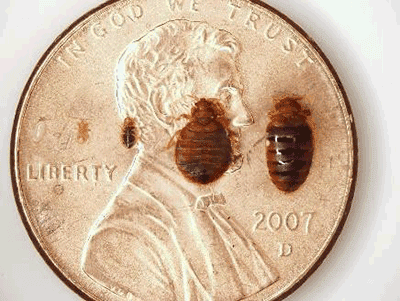Affordable A1 Bed Bug Removal in Houston - Expert Exterminators
Affordable A1 Bed Bug Removal in Houston - Expert Exterminators
Blog Article
Recognizing the Lifecycle of Insects for Targeted Control Techniques
Understanding the lifecycle of parasites is a basic element of effective parasite administration techniques. By understanding the different stages of growth that bugs go through, a more targeted and specific approach can be taken on to manage their populations. This expertise not only loses light on the susceptabilities within the pest lifecycle yet likewise leads the method for implementing critical steps that can interrupt their growth and recreation cycles. With a much deeper understanding of exactly how pests progress and thrive, customized control techniques can be made to deal with details points in their lifecycle, inevitably resulting in even more successful bug management results.
Relevance of Recognizing Insect Lifecycle
Understanding the lifecycle of insects is necessary for developing effective and targeted control techniques in bug monitoring. By comprehending the various stages a bug experiences from egg to grownup, pest control professionals can determine weak spots in the lifecycle where treatment can be most effective. As an example, knowing when larvae are most active can help identify the ideal timing for applying larvicides. In addition, recognizing the life-span of a parasite varieties can assist in predicting populace development patterns and possible problem threats.
In addition, identifying the certain environmental conditions necessary for each and every phase of the bug's lifecycle can assist decisions on habitat alteration or exemption techniques to lower and interrupt the lifecycle insect populations. This expertise allows pest administration professionals to apply positive steps as opposed to counting entirely on reactive therapies, resulting in more long-term and lasting pest control remedies. Eventually, an extensive understanding of pest lifecycles encourages insect control practitioners to customize their techniques properly, making the most of and decreasing environmental influences control outcomes.
Trick Stages in Bug Development
To successfully apply targeted control strategies in insect administration, a vital facet exists in adequately identifying and understanding the essential stages in insect advancement. Bug advancement normally is composed of several essential stages that are important for their lifecycle and administration.

Vulnerabilities in Bug Lifecycle
Throughout the numerous stages of a bug's lifecycle, distinctive vulnerabilities arise that can be purposefully targeted for effective control procedures (A1 Bed Bug treatment houston). One critical vulnerability exists in the egg phase, where pests are typically extra susceptible to specific pesticides or organic control agents due to their soft outer shell, making them less complicated targets for treatment. Understanding these vulnerabilities in the bug lifecycle is essential for developing reliable and precise control techniques that successfully take care of parasite populaces while minimizing environmental effect.
Carrying Out Targeted Control Procedures

Carrying out targeted control measures normally entails a multi-faceted method. This might consist of habitat adjustment to make the setting less congenial to parasites, such as removing standing water for insect control or securing access points for rodents. Furthermore, organic control methods can be utilized, where all-natural killers or virus are introduced to keep bug populaces in check.
Chemical control, such as the careful application of pesticides, is one more usual approach. It is important to utilize these compounds carefully to lessen ecological influence and possible injury to non-target varieties - A1 Bed Bug treatment houston. Integrated Insect Administration (IPM) methods that integrate different control procedures in a worked with and lasting way are commonly one of the most efficient in accomplishing long-lasting insect administration goals. By executing targeted control steps based on a comprehensive understanding of pest lifecycles, pest populaces can be properly managed while reducing risks to human health and the environment.
Improved Pest Monitoring Practices

In addition, the consolidation of biological control representatives, such as natural killers or pathogens of A1 Bed Bug treatment houston bugs, can help lower reliance on chemical pesticides and advertise a more well balanced community. Applying physical barriers and catches can also belong to enhanced bug management methods, supplying non-toxic and targeted remedies for insect control. In addition, making use of scents and various other semiochemicals can interrupt pest breeding patterns and communication, resulting in lowered insect populaces over time.
Final Thought
In verdict, understanding the lifecycle of bugs is crucial for efficient bug management techniques. By recognizing key phases in pest development and vulnerabilities in their lifecycle, targeted control steps can be executed to reduce insect populaces. Boosted parasite management methods can assist lower the reliance on broad-spectrum pesticides and promote more lasting and eco-friendly insect control techniques. This expertise plays an essential role in maintaining healthy communities and agricultural efficiency.
Recognizing the lifecycle of bugs is necessary for creating efficient and targeted control methods in insect administration. By comprehending the various phases a parasite goes with from egg to adult, insect control professionals can recognize at risk factors in the lifecycle where intervention can be most successful. Inevitably, a detailed understanding of parasite lifecycles equips insect control practitioners to customize their approaches successfully, reducing environmental influences and optimizing control outcomes.
By carrying out targeted control actions based on a comprehensive understanding of bug lifecycles, insect populaces can be successfully controlled while decreasing dangers to human health and the setting.
By determining key phases in pest growth and vulnerabilities in their lifecycle, targeted control actions can be carried out to minimize bug populations.
Report this page